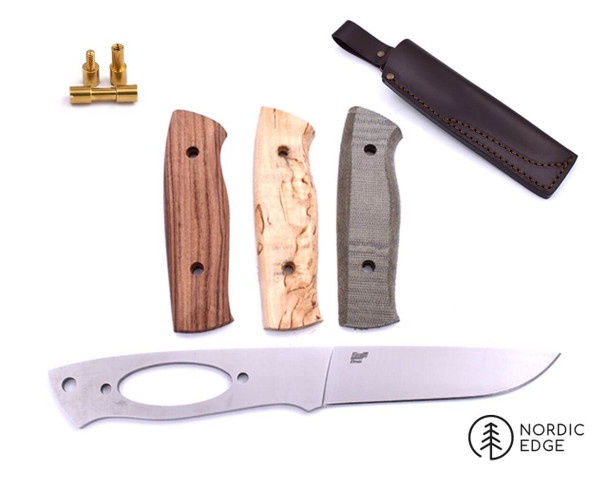Understanding the knife metal chart as well as various metals used in blade production is critical when choosing the correct knife. The metal used in a knife has a significant impact on its performance, longevity, and maintenance requirements. With so many alternatives, it's critical to have a convenient reference to help you make an informed selection. In this article, we'll dig into the realm of knife metals, giving you a detailed chart outlining their properties and applications.
Understanding the Metal Composition of Knives:
Stainless Steel
Because of its superior corrosion resistance and simplicity of maintenance, stainless steel is the most commonly used knife metal. The inclusion of chromium results in the formation of a protective layer that inhibits corrosion. Stainless steel grades differ in terms of hardness, toughness, and edge retention. 440C, VG-10, and AUS-8 are examples of popular stainless steel alloys.
Carbon steel
Carbon steel is renowned for its outstanding sharpness, edge holding, and sharpening ease. It does, however, need additional upkeep because it is prone to rust and discolouration. Carbon steel knives acquire a lovely patina over time, which adds character to the blade. Carbon steel alloys that are popular include 1095, 52100, and O1.
High Carbon Stainless Steel
High carbon stainless steel combines the greatest qualities of carbon steel with stainless steel, delivering outstanding sharpness and edge retention while providing greater corrosion resistance. It finds a good balance between the two, making it a popular pick among knife lovers. VG-10, S30V, and CPM-154 are popular high-carbon stainless steel alloys.
Damascene Steel
Damascus steel is famous for its distinct and eye-catching pattern. It is not a single metal, but rather a forging method that includes stacking many metals to make an aesthetically beautiful and long-lasting blade. The mixing of different steels can result in improved performance.
Tool Steel
Tool steel is extremely robust and is frequently used in heavy-duty applications. Hunting knives, survival knives, and other utility blades are frequently made of tool steel. D2, A2, and S7 are popular tool steel alloys.
Ceramic
Ceramic knives are recognized for their extraordinary toughness, which allows them to keep a razor-sharp edge for an extended amount of time. They are lightweight, corrosion-resistant, and have no metallic flavour. Ceramic knives are ideally suited for slicing fruits and vegetables, as they can become brittle and chip when used on hard objects.
Conclusion
Choosing the proper knife metal is an important step in obtaining the best blade for your needs. Understanding the features and characteristics of different knife metals from the knife metal chart allows you to make an informed selection whether you're a cook, an outdoor enthusiast, or a collector.


No comments yet